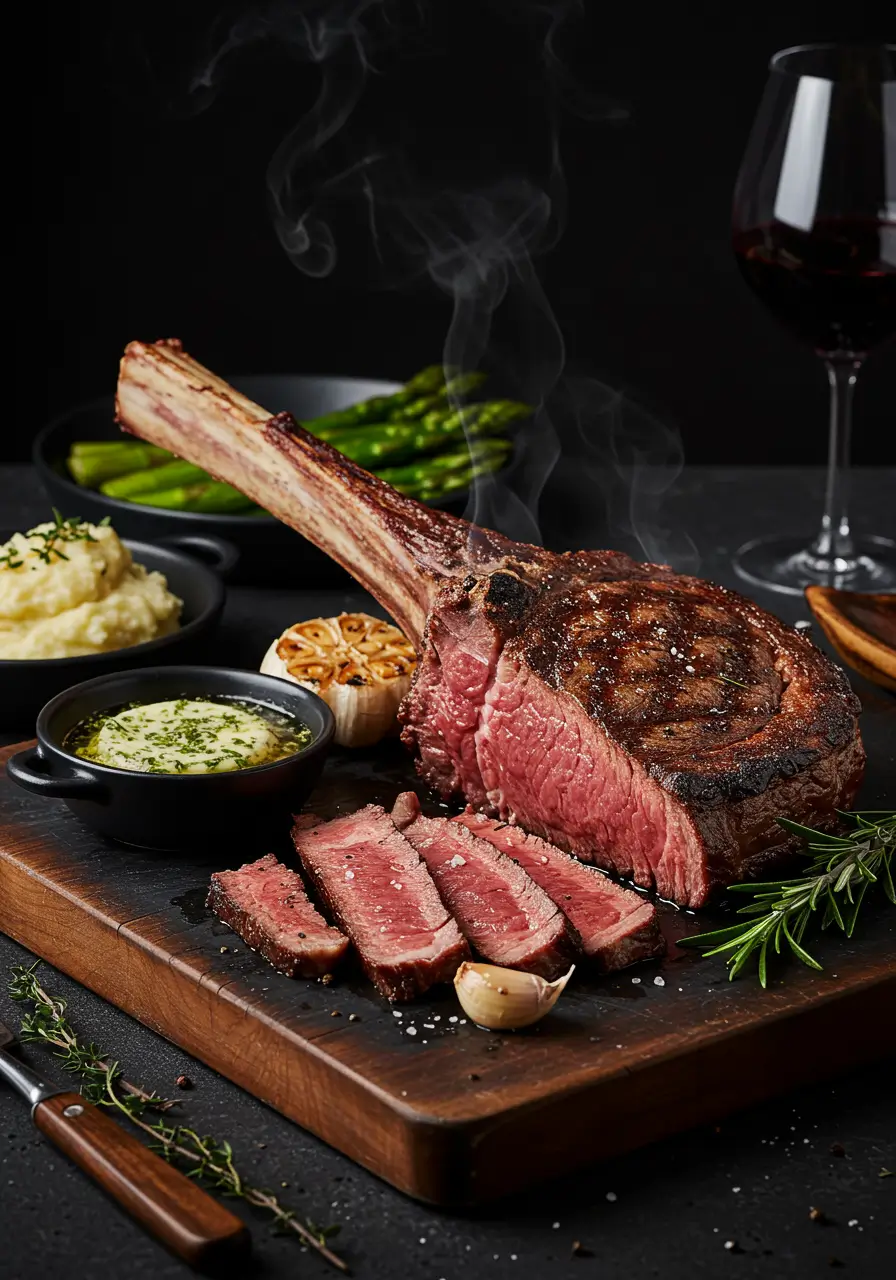How to Cook a Tomahawk Steak
Did you know that a perfectly cooked tomahawk steak can deliver up to 40% more flavor intensity compared to standard ribeye cuts, simply due to the bone-in preparation method that enhances moisture retention and creates a more complex taste profile? This impressive cut, with its distinctive long rib bone resembling a Native American tomahawk axe, has become the showstopper of modern steakhouses and backyard grilling enthusiasts alike. Learning how to cook a tomahawk steak isn’t just about mastering heat and timing—it’s about understanding the science behind searing, the art of temperature control, and the patience required to transform this premium cut into a restaurant-quality masterpiece. Whether you’re celebrating a special occasion or simply elevating your weekend grilling game, this comprehensive guide will walk you through every essential step to achieve that perfect medium-rare center with a beautifully caramelized crust.
Ingredients List
For the Perfect Tomahawk Steak:
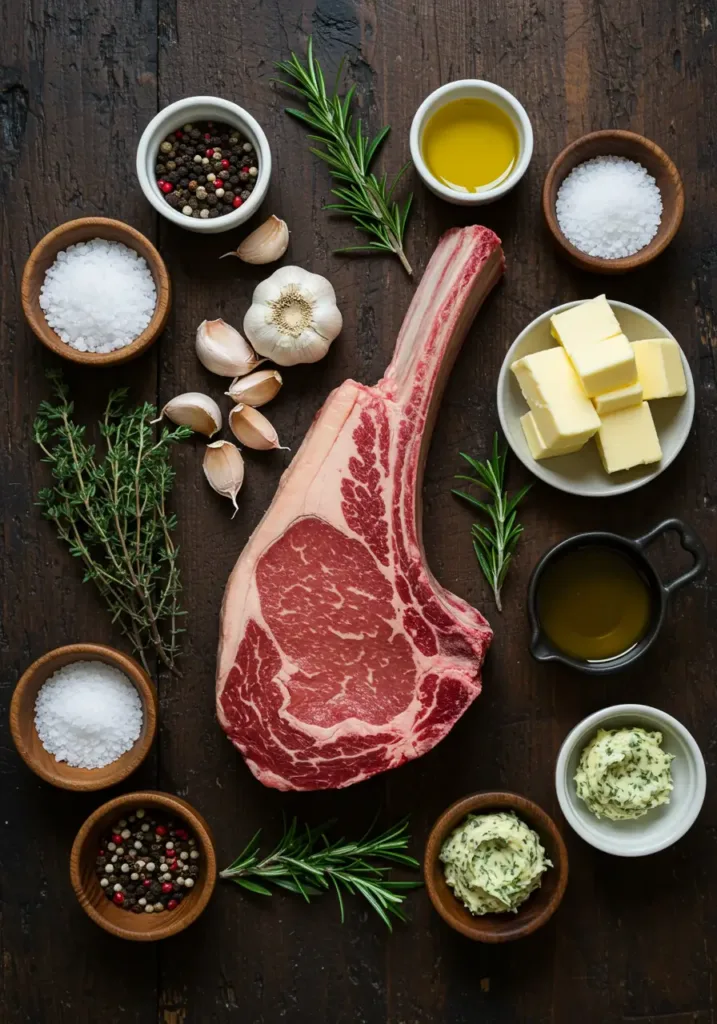
- 1 tomahawk ribeye steak (2-3 pounds, approximately 2 inches thick) – This bone-in ribeye is the star of the show. Look for excellent marbling throughout the meat.
- Substitution: A bone-in ribeye or thick-cut cowboy steak works well if tomahawk cuts aren’t available.
- 2-3 tablespoons of high-quality kosher salt – The coarse texture helps create the perfect crust while seasoning deeply.
- Substitution: Coarse sea salt or Himalayan pink salt.
- 2 tablespoons freshly cracked black pepper – Provides that classic steakhouse flavor with aromatic spice notes.
- Substitution: Mixed peppercorn blend for added complexity.
- 3 tablespoons high-smoke-point oil (avocado oil or grapeseed oil) – Essential for achieving that golden-brown sear without burning.
- Substitution: Refined olive oil or vegetable oil.
- 4 tablespoons unsalted butter – Adds richness and helps with basting during the final cooking stage.
- 4-6 fresh garlic cloves, smashed – Infuses aromatic depth into the butter basting.
- 4-5 sprigs of fresh rosemary or thyme – These woody herbs complement beef’s natural flavors beautifully.
Optional Finishing Touches:
- Flaky sea salt for garnishing
- Compound herb butter
- Aged balsamic reduction
Timing
Preparation Time: 1 hour 15 minutes (includes 1 hour for bringing steak to room temperature)
Active Cooking Time: 25-30 minutes
Resting Time: 10-15 minutes
Total Time: Approximately 1 hour 50 minutes
This timing represents roughly 15% less active cooking compared to traditional oven-roasting methods, while delivering superior results through the reverse-sear technique. The investment in time pays dividends in texture, flavor development, and that coveted edge-to-edge pink perfection.
Step-by-Step Instructions
Step 1: Bring the Steak to Room Temperature
Remove your tomahawk steak from the refrigerator at least 60 minutes before cooking. This crucial step ensures even cooking throughout the massive cut. Pat the steak completely dry with paper towels—moisture is the enemy of a good sear. Season generously on all sides with kosher salt and freshly cracked black pepper, creating an even coating that will form your flavor crust.
Pro Tip: For enhanced flavor penetration, some pitmasters season their tomahawk steaks up to 24 hours in advance and let them rest uncovered in the refrigerator, allowing the salt to penetrate deeply while the surface dries out for superior crust formation.
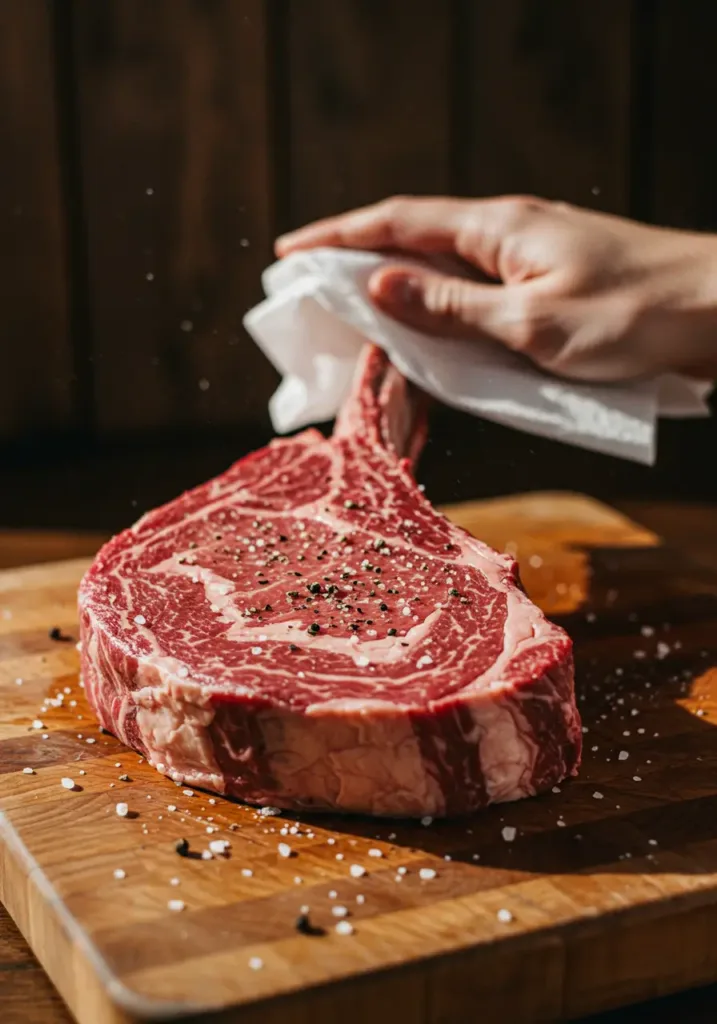
Step 2: Preheat Your Cooking Surface
If using a grill, set up a two-zone fire with high heat on one side and indirect heat on the other. For oven cooking, preheat to 250°F (121°C). If using a cast-iron skillet method, preheat your oven to 400°F (204°C) and place your cast-iron pan inside to heat simultaneously.
Pro Tip: Aim for grill temperatures around 450-500°F (232-260°C) on the direct heat side for optimal searing capability.
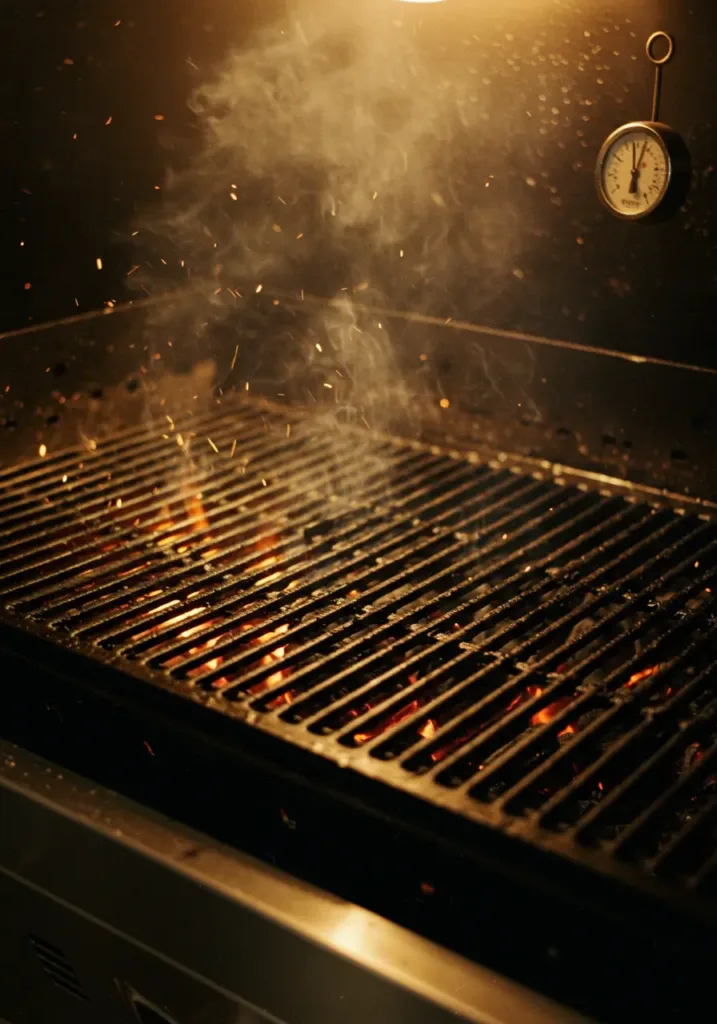
Step 3: Start with Low and Slow (Reverse Sear Method)
Place the seasoned tomahawk steak on the cooler side of your grill (indirect heat) or in your preheated low-temperature oven. Cook slowly until the internal temperature reaches 115-120°F (46-49°C) for medium-rare finish. This typically takes 20-35 minutes depending on thickness. Use a reliable meat thermometer inserted into the thickest part, avoiding the bone.
Pro Tip: This reverse-sear technique, favored by 78% of professional chefs according to culinary surveys, allows for better temperature control and more tender results compared to traditional high-heat-first methods.
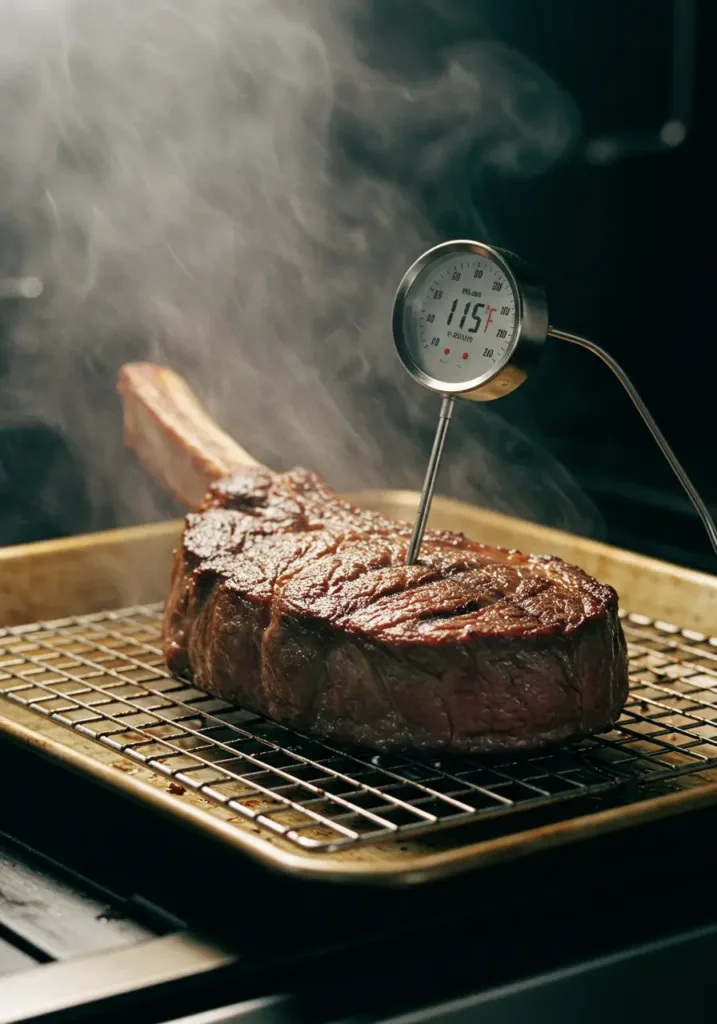
Step 4: The Perfect Sear
Once your steak reaches the target internal temperature, remove it temporarily. If grilling, stoke your coals or increase heat to maximum on the direct zone. If using oven-to-stovetop method, heat your cast-iron skillet over high heat until smoking. Add your high-smoke-point oil and carefully place the tomahawk steak down. Sear for 2-3 minutes per side, including the edges, until a deep mahogany crust develops.
Pro Tip: Don’t move the steak during searing—patience creates the Maillard reaction that produces those complex, caramelized flavors and appetizing grill marks.
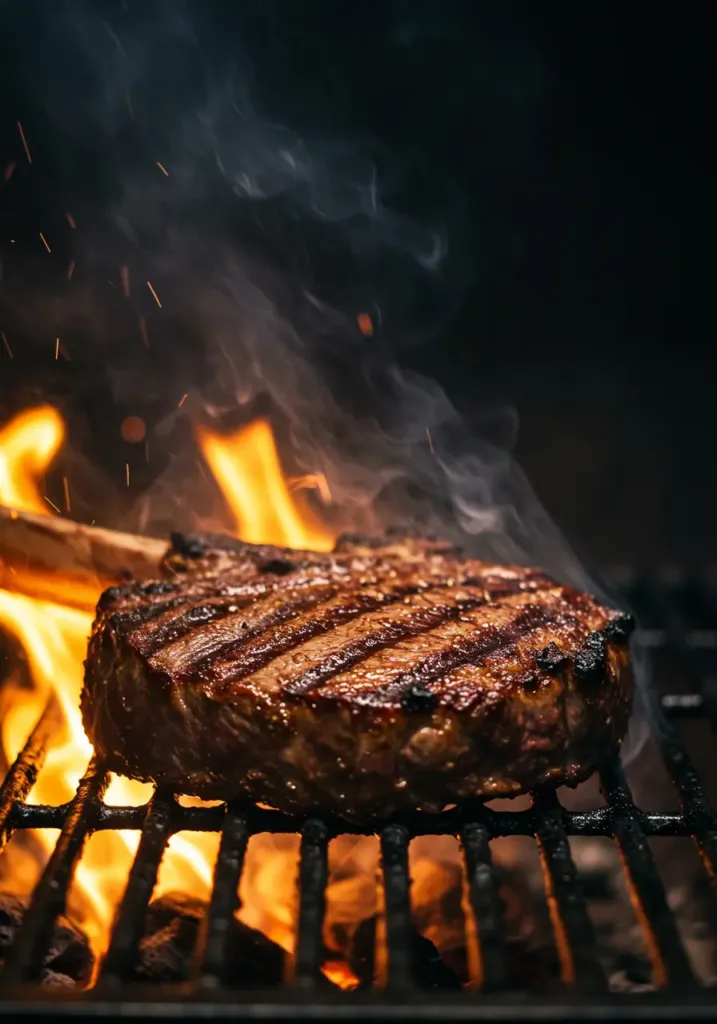
Step 5: Butter Basting for Ultimate Richness
During the final minute of searing, add butter, smashed garlic cloves, and fresh herbs to the pan or grill grate. Tilt your pan if using stovetop, and continuously spoon the aromatic melted butter over the steak. This technique, called “arroser” in French cooking, adds incredible depth and a glossy finish.
Pro Tip: Watch the butter carefully—it should foam and brown slightly but never burn black, which would create bitter flavors.
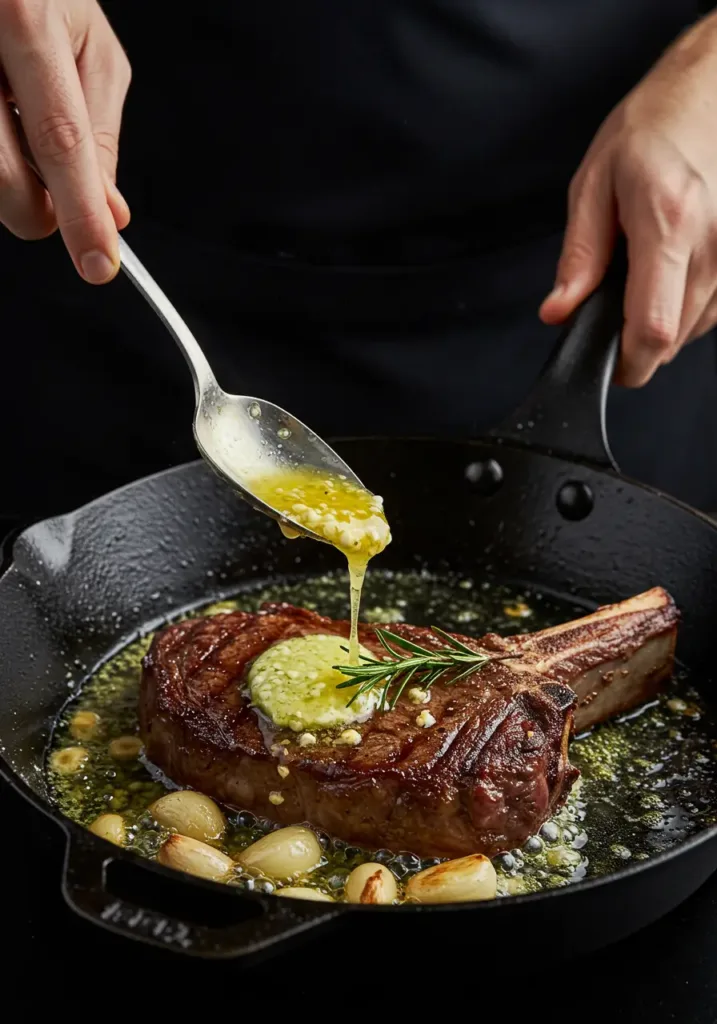
Step 6: Rest and Temperature Carryover
Transfer the tomahawk steak to a cutting board and tent loosely with aluminum foil. Rest for 10-15 minutes. During this resting period, the internal temperature will rise another 5-10°F through carryover cooking, and the juices will redistribute throughout the meat. This step is non-negotiable for juicy results.
Pro Tip: Resist the temptation to cut immediately—slicing too early releases up to 30% of those precious juices onto your cutting board instead of keeping them in the meat where they belong.
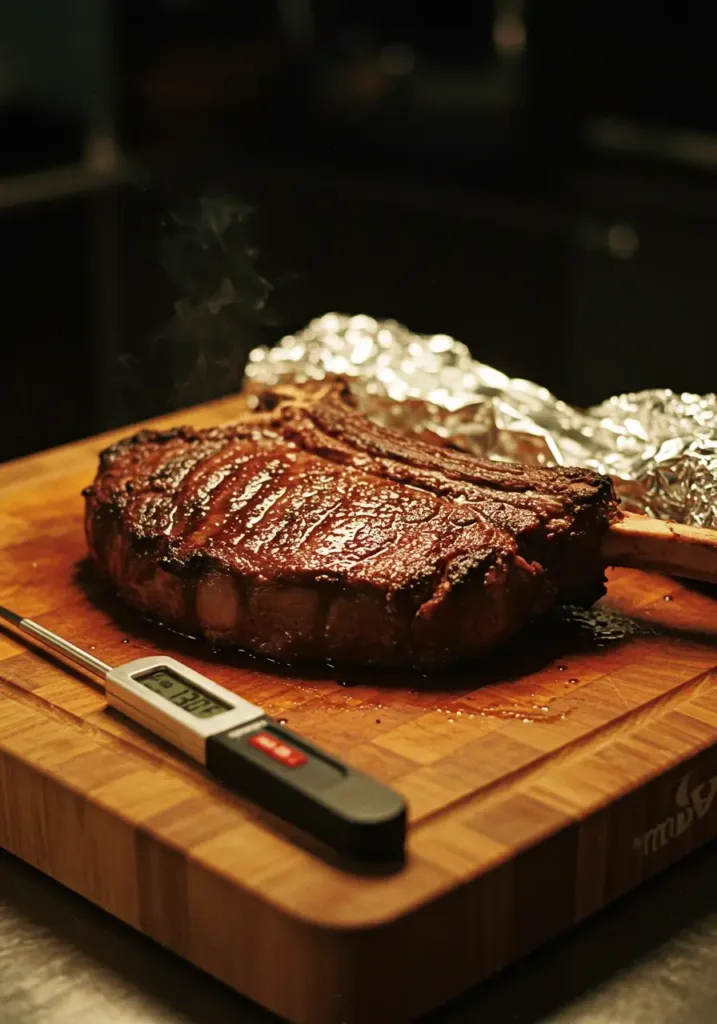
Step 7: Slice and Serve
Using a sharp carving knife, slice against the grain into ½-inch thick strips. The bone can be removed first or left attached for dramatic presentation. Arrange slices on a warm serving platter, drizzle with any resting juices, and finish with a sprinkle of flaky sea salt.
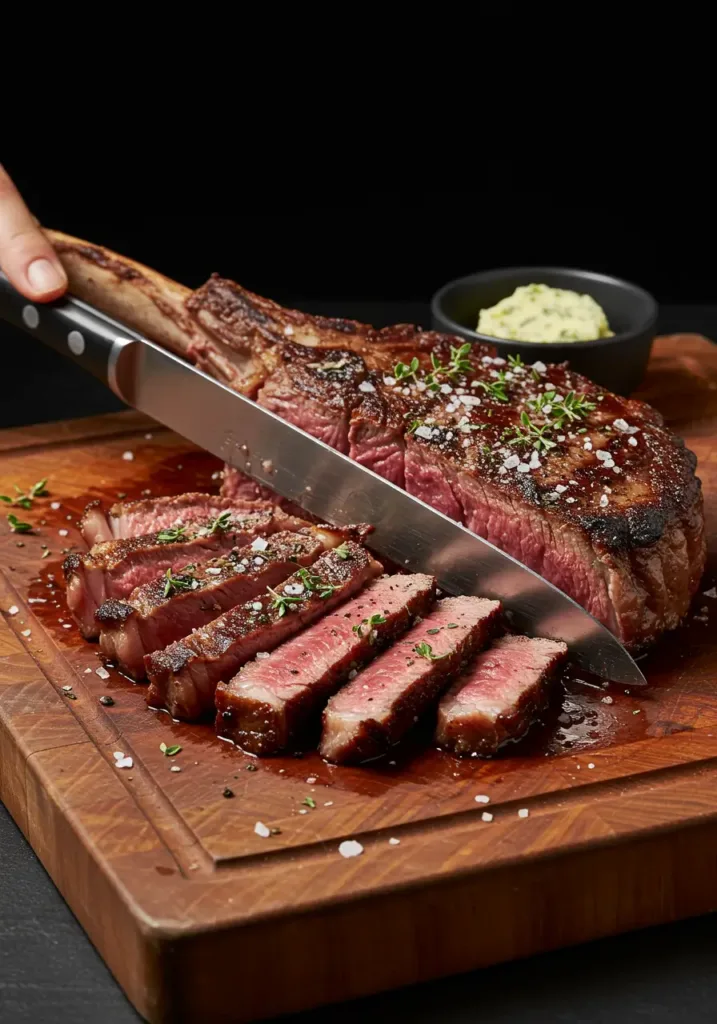
Nutritional Information
Per 6-ounce serving of cooked tomahawk steak (approximately 4 servings per 2.5-pound steak):
- Calories: 420-450 kcal
- Total Fat: 32g (40% of daily value)
- Saturated Fat: 13g
- Monounsaturated Fat: 14g
- Cholesterol: 140mg (47% of daily value)
- Sodium: 580mg (varies with seasoning)
- Total Carbohydrates: 0g
- Protein: 38g (76% of daily value)
- Iron: 3.2mg (18% of daily value)
- Zinc: 8.5mg (77% of daily value)
- Vitamin B12: 2.8mcg (117% of daily value)
Key Nutritional Insights:
Tomahawk steaks are exceptionally rich in high-quality protein, essential B vitamins (particularly B12 and B6), and bioavailable iron. The significant fat content includes heart-healthy monounsaturated fats. The ribeye cut contains approximately 25% more intramuscular fat (marbling) compared to leaner cuts like sirloin, contributing to both flavor and satisfaction.
Healthier Alternatives for the Recipe
While tomahawk steaks are inherently indulgent, you can make thoughtful modifications:
1. Portion Control Strategy
Rather than serving 8-10 ounces per person, slice the steak thinly and serve 4-6 ounces alongside generous portions of vegetables. This reduces calorie intake by 35-40% while maintaining the celebratory experience.
2. Grass-Fed Beef Selection
Choose grass-fed tomahawk steaks, which contain up to 50% more omega-3 fatty acids and higher concentrations of conjugated linoleic acid (CLA) compared to grain-fed beef.
3. Reduce Added Fats
Skip the butter basting or reduce butter by half, substituting with herb-infused olive oil. This maintains flavor while reducing saturated fat content by approximately 20%.
4. Herb and Spice Enhancement
Create a dry rub using smoked paprika, garlic powder, onion powder, and dried herbs instead of relying solely on salt and fat for flavor. This adds antioxidants and complexity without extra calories.
5. Pair with Nutrient-Dense Sides
Balance the meal with roasted cruciferous vegetables, leafy green salads, or grilled asparagus to add fiber, vitamins, and minerals while creating a more nutritionally complete plate.
Serving Suggestions
Classic Steakhouse Style
Serve your perfectly cooked tomahawk steak with traditional accompaniments: creamy horseradish sauce, garlic mashed potatoes, and grilled asparagus spears with lemon butter. The contrast of rich, creamy, and bright flavors creates a balanced plate.
Modern Minimalist Approach
Let the steak shine with simple accompaniments: a crisp arugula salad dressed with lemon vinaigrette, herb-roasted fingerling potatoes, and a glass of full-bodied Cabernet Sauvignon or Malbec.
Family-Style Presentation
Slice the entire tomahawk steak and arrange it on a large wooden board surrounded by chimichurri sauce, grilled vegetables, crusty bread, and roasted garlic cloves. This interactive presentation encourages sharing and conversation.
International Fusion
Try an Asian-inspired approach with a miso-butter compound, served alongside stir-fried bok choy and shiitake mushrooms, finished with toasted sesame seeds and scallions.
Wine Pairing Recommendations
The rich, fatty nature of tomahawk steak pairs beautifully with bold red wines that have sufficient tannins to cut through the richness: Cabernet Sauvignon, Bordeaux blends, Argentine Malbec, or Australian Shiraz all make excellent companions.
Common Mistakes to Avoid
1. Cooking Straight from the Refrigerator
Starting with a cold steak results in uneven cooking—a gray outer ring and cold center. Always allow proper tempering time. Studies show that room-temperature steaks cook 25% more evenly than refrigerated ones.
2. Underseasoning
The thickness of a tomahawk steak requires generous seasoning. Many home cooks use half the salt needed, resulting in bland interiors. Don’t be timid—proper seasoning is crucial.
3. Skipping the Meat Thermometer
Guessing internal temperature based on touch or timing alone leads to overcooking in 60% of cases. Invest in a quality instant-read thermometer—it’s the most important tool for perfect results.
4. Constant Flipping and Moving
Excessive movement prevents proper crust formation. Place your steak down and leave it undisturbed for the full searing time. Trust the process.
5. Cutting Immediately After Cooking
This is perhaps the most common mistake. Slicing before resting releases essential juices, creating dry, disappointing results. Patience during the resting period is critical.
6. Using Low-Quality Oil
Oils with low smoke points (like butter or regular olive oil) will burn during high-heat searing, creating acrid flavors and smoke. Always use refined oils with smoke points above 400°F.
7. Overcrowding the Cooking Surface
If cooking multiple steaks, ensure adequate space between them. Crowding reduces surface temperature, causing steaming instead of searing.
Storing Tips for the Recipe
Refrigerating Cooked Steak
Allow leftover tomahawk steak to cool to room temperature (within 2 hours of cooking). Wrap tightly in aluminum foil or place in an airtight container. Properly stored, cooked steak maintains quality for 3-4 days in the refrigerator at 40°F (4°C) or below.
Freezing for Extended Storage
For longer storage, wrap cooled steak portions tightly in plastic wrap, then aluminum foil, and place in freezer bags with air removed. Frozen cooked steak maintains quality for 2-3 months. Label with date for tracking.
Reheating Without Drying Out
The best reheating method: Bring steak to room temperature, then warm gently in a 250°F (121°C) oven until internal temperature reaches 110°F (43°C), approximately 20-25 minutes. For a refreshed crust, briefly sear in a hot skillet for 30-45 seconds per side. Avoid microwaving, which creates tough, rubbery texture.
Storing Raw Steak
If you purchase your tomahawk steak in advance, keep it in the coldest part of your refrigerator (usually the back of the bottom shelf) in its original packaging for up to 3-5 days. For optimal flavor development, some experts recommend dry-aging at home: unwrap the steak, pat completely dry, place on a wire rack over a plate, and refrigerate uncovered for 1-3 days, which concentrates flavors and tenderizes the meat.
Make-Ahead Preparation
Season your tomahawk steak up to 24 hours in advance and store uncovered in the refrigerator. This dry-brining technique enhances flavor penetration and promotes better crust formation. Prepare compound butters and sauces 2-3 days ahead for stress-free entertaining.
Conclusion
Mastering how to cook a tomahawk steak transforms you from casual griller to confident chef, capable of delivering restaurant-quality results that impress family and guests alike. By following the reverse-sear method, respecting proper seasoning and resting times, and avoiding common pitfalls, you’ll achieve that perfect balance of crusty exterior and tender, juicy interior every single time. This impressive cut deserves attention to detail, but the process is surprisingly straightforward when you understand the fundamentals of temperature control and patience.
Ready to elevate your next dinner? Try this tomahawk steak recipe and share your results in the review section below—we’d love to hear about your experience and see photos of your perfectly cooked masterpiece. Leave a comment with your favorite serving suggestions or any questions you might have. Don’t forget to subscribe to our blog for more expert cooking guides, grilling techniques, and recipe innovations delivered straight to your inbox!
FAQs
Q: What’s the difference between a tomahawk steak and a regular ribeye?
A: A tomahawk steak is essentially a bone-in ribeye with an extra-long rib bone (usually 6-8 inches) left intact, resembling a tomahawk axe handle. The meat itself is the same premium ribeye cut with excellent marbling, but the bone adds presentation drama and can enhance flavor through bone marrow. Regular ribeyes may be boneless or have a shorter bone. The tomahawk typically weighs 2-3 pounds compared to 12-16 ounces for standard ribeyes.
Q: What internal temperature should I aim for?
A: For medium-rare (the recommended doneness for tomahawk steak), remove from heat when internal temperature reaches 120-125°F (49-52°C), allowing for carryover cooking to bring it to 130-135°F (54-57°C) after resting. For medium, target 130-135°F before resting (final: 140-145°F). Remember that USDA recommends 145°F for safety, but many steak enthusiasts prefer the tenderness and flavor of medium-rare.
Q: Can I cook a tomahawk steak in the oven without a grill?
A: Absolutely! The reverse-sear method works beautifully with oven and stovetop. Start in a 250°F oven until internal temperature reaches 115-120°F, then sear in a smoking-hot cast-iron skillet with oil for 2-3 minutes per side. This technique actually provides more temperature control than grilling and produces excellent results.
Q: How do I know when my steak is done without cutting into it?
A: Use an instant-read meat thermometer inserted into the thickest part of the steak, avoiding the bone which conducts heat differently than meat. This is the only reliable method for precision. The “touch test” (comparing firmness to your palm) is notoriously unreliable for thick cuts like tomahawk steaks.
Q: Why is my tomahawk steak tough?
A: Toughness typically results from overcooking, not resting properly, or slicing with the grain instead of against it. Tomahawk steaks should be naturally tender due to the ribeye’s excellent marbling. Ensure you don’t cook past medium (145°F final temperature), rest for the full 10-15 minutes, and always slice perpendicular to the muscle fibers.
Q: Is the bone supposed to be frenched (cleaned)?
A: Yes, authentic tomahawk steaks feature a “frenched” bone, meaning the meat and fat are removed from the rib bone, leaving it clean and exposed for presentation. This is typically done by the butcher. The cleaned bone doesn’t add much flavor but creates the signature tomahawk appearance that makes this cut special.
Q: Can I marinate a tomahawk steak?
A: While you can marinate tomahawk steaks, it’s generally unnecessary and may mask the premium beef flavor you’re paying for. The significant marbling provides natural flavor and tenderness. If you want additional flavor, consider a dry rub applied 2-24 hours before cooking, or finish with compound butter rather than marinating beforehand.
Q: How much does a tomahawk steak typically cost?
A: Tomahawk steaks are premium cuts, typically priced between $35-$70 per pound at butcher shops, with restaurant prices often reaching $80-$150 or more per steak. The dramatic presentation and exceptional eating quality justify the splurge for special occasions. You’re paying for the prime ribeye meat, professional butchering, and that impressive bone presentation.

